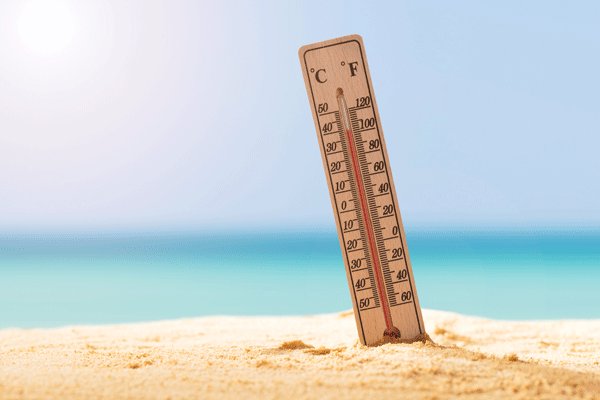Summer is almost here with its beautiful sunny days and warm temperatures. Here at Lanto Health we get questions about whether exposure to heat during shipping has an effect on the probiotic Lactobacillus sakei in Lanto Sinus. We are also asked whether customers should be concerned that the cold packs used in each package melt during shipping.
We have great news for you. Lactobacillus sakei likes warm temperatures! L. sakei lives and reproduces in the human body (in our sinuses and gut) at about 98.6 degrees Fahrenheit. Scientific studies and private laboratory testing confirm that L. sakei lives in a wide range of temperatures, including warm temperatures.
This means that short-term shipping to customers has very little to no impact on the probiotic. It is expected that the ice packs will melt during shipping, and that the product will become warmer. This is OK! The L. sakei bacteria are still alive and in great shape.
Lanto Sinus is shipped with cold packs to keep it cool for the first part of its journey to the customer, specifically to extend its long-term shelf life.

All species of Lactobacillus bacteria, including L. sakei, can live for extended periods without refrigeration. Refrigeration is the ideal condition for long-term storage of live probiotics. It maintains the probiotic at “storage temperature” in order to extend the long-term shelf life of live Lactobacillus species. For Lanto Sinus, it’s at least a year from time of manufacture.
Lactobacillus species can live in temperatures over 100 degrees Fahrenheit
Studies find that Lactobacillus species can live in hot temperatures till at least 122 degrees Fahrenheit or higher (it varies by species). Many of the studies looking at heat and L. sakei (or other Lactobacillus species) are looking at what temperatures are best to grow the species for mass production or medical research.
For example, one 2018 study pointed out that L. sakei strains grow or multiply between 40 and 113 degrees Fahrenheit. At even higher temperatures it’ll live, but it won’t multiply.
Most bacteria (both harmful species and beneficial Lactobacillus species) start to die at 140 degrees, and all are dead at 160 degrees Fahrenheit, according to the USDA. But it turns out that is not the end of the story.

New research finds that L. sakei killed by heat is still antimicrobial
Exciting new research in the last two years is finding that even when L. sakei has been killed after exposure to high heat (heat-killed), it is still antimicrobial. These research results have the potential to alter how probiotics are shipped, stored, and used in the future.
In these studies, heat-killed means deliberately killing live probiotic bacteria with high temperatures (usually 212 degrees Fahrenheit) for a length of time, usually 15 to 30 minutes.
Some studies are finding that heat-treated L. sakei bacteria have the same effects as live L. sakei. Only a few health conditions (e.g., atopic dermatitis) have been looked at so far, but in these studies heat-killed L. sakei bacteria were as effective as live bacteria against harmful microbes and as a treatment. In these studies, the probiotic was taken orally (by mouth).
But what about the bacteria Staphylococcus aureus, which is a big problem for many people with sinusitis? The strain of L. sakei that is in Lanto Sinus is very effective against Staphylococcus aureus. This is why recent research showing that L. sakei is still antimicrobial after being heat-killed is great news.

A 2022 study by Miranti et al compared live and heat-treated L. sakei against several species of harmful bacteria, including S. aureus. They tested the effect of different heat treatments, from 140 degrees to 212 degrees Fahrenheit. They found that live L. sakei at 98.6 degrees was the most effective, but that heat-killed L. sakei was still antimicrobial against the bacterial species tested, including S. aureus. Heat-treating at 140 degrees Fahrenheit (60 degrees Celsius) resulted in the most antimicrobial activity of all the heat-treatments.
Results from these and other studies have led researchers to say that L. sakei can endure harsh conditions and that it has “thermal resistance” – that it can tolerate heat stress.
In conclusion, rest assured that customers are getting a probiotic in excellent condition, and this is backed by science.


Leave a comment: